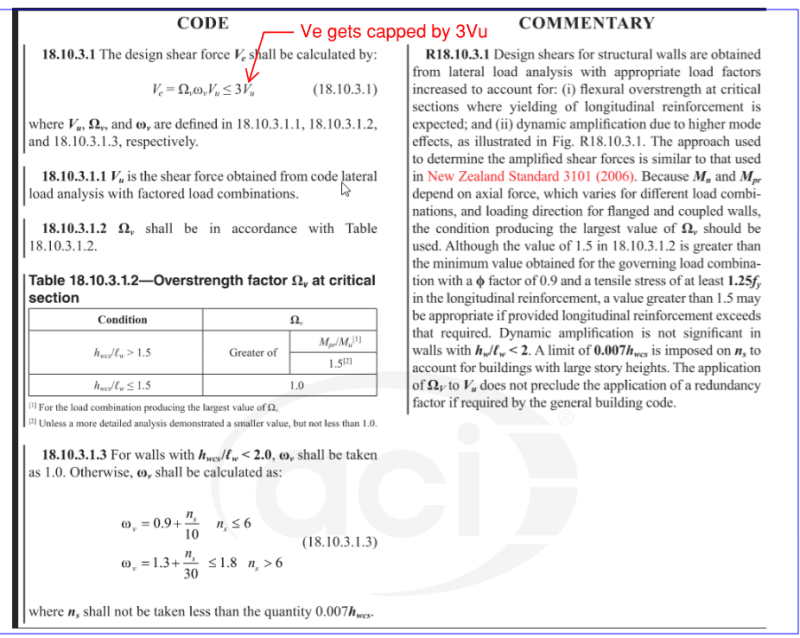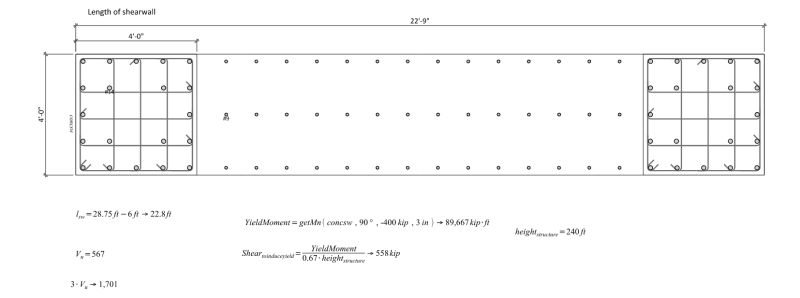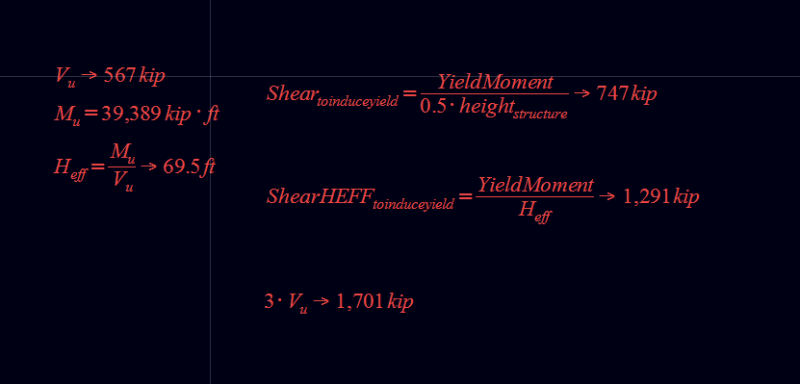sticksandtriangles
Structural
Looking at a tall, high seismic concrete tower with the new ACI 318-19.
The new equations for design shear strength are as follows:

In our specific case, 18.10.3.1 gets capped at 3*Vu, where Vu is the shear that comes from the analysis model.
I do not see any specific out in ACI 318-19 that allows you to pick the minimum of 18.10.3.1 or the shear that is required to induce flexural yielding.
For example, in our building, we are looking at a sample wall, ~4' wide, 22'-9" long and 240ft high.
Vu = 567 kips
3*Vu = 1701 kips
Doing a plastic analysis on this wall, assuming a conservative value on the location of the shear load on the wall, 0.5 * h, the shear to induce flexural yielding = 747 kips. This plastic moment capacity was calc'd with 1.25fy.
Some sample calc's shown below:

Can I limit my design shear to 747kips instead of the 3*Vu value of 1701 kips? There does not seem to be anything in ACI 318-19 that states you can limit Ve to be the plastic shear to induce flexural yielding of the wall, but that seems to be what is at the heart of the code.
Appreciate the feedback!
The new equations for design shear strength are as follows:

In our specific case, 18.10.3.1 gets capped at 3*Vu, where Vu is the shear that comes from the analysis model.
I do not see any specific out in ACI 318-19 that allows you to pick the minimum of 18.10.3.1 or the shear that is required to induce flexural yielding.
For example, in our building, we are looking at a sample wall, ~4' wide, 22'-9" long and 240ft high.
Vu = 567 kips
3*Vu = 1701 kips
Doing a plastic analysis on this wall, assuming a conservative value on the location of the shear load on the wall, 0.5 * h, the shear to induce flexural yielding = 747 kips. This plastic moment capacity was calc'd with 1.25fy.
Some sample calc's shown below:

Can I limit my design shear to 747kips instead of the 3*Vu value of 1701 kips? There does not seem to be anything in ACI 318-19 that states you can limit Ve to be the plastic shear to induce flexural yielding of the wall, but that seems to be what is at the heart of the code.
Appreciate the feedback!

